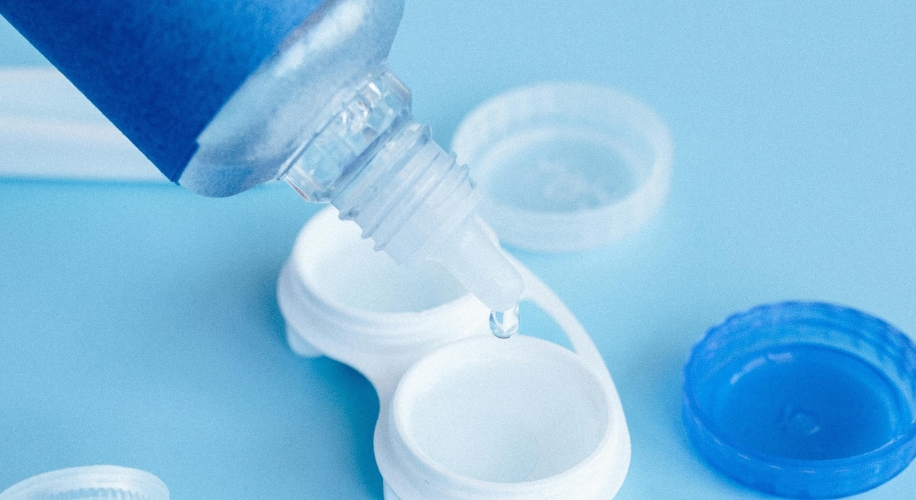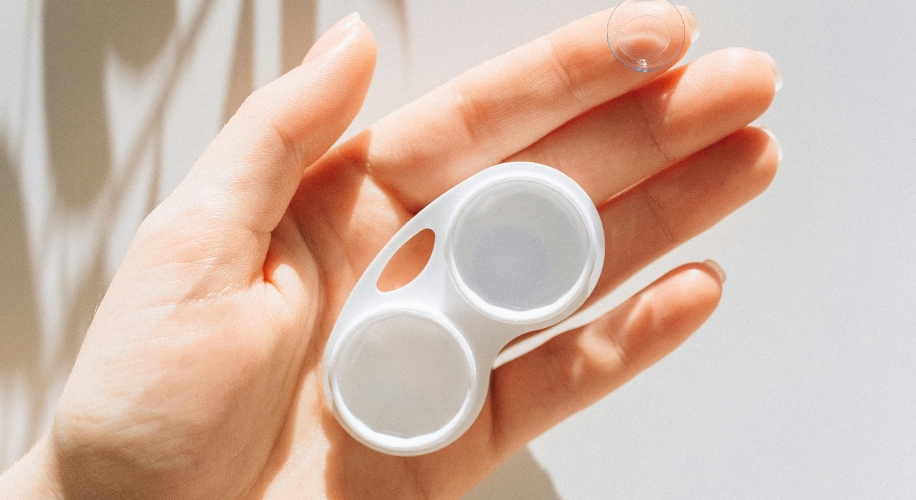When to Replace Your Contact Lens Case
Contact lenses are a convenient and popular choice for vision correction, offering comfort and clarity to millions worldwide. However, maintaining good eye health goes beyond just wearing the right lenses—it involves proper care of your contact lens case as well. Here’s everything you need to know about when and why you should replace your contact lens case.
Photo by Nataliya Vaitkevich
Why Replace Your Contact Lens Case?
Your contact lens case plays a crucial role in the hygiene of your lenses. It serves as a storage unit, keeping your lenses safe from contaminants and ensuring they remain sterile before they touch your eyes. Over time, however, contact lens cases can accumulate bacteria, debris, and protein deposits from your contact lenses, even with regular cleaning. This buildup can potentially lead to eye infections or discomfort, making it essential to replace your case periodically.
Reasons to Replace
- Preventing Bacterial Contamination: Despite cleaning, bacteria can still accumulate in the case’s nooks and crannies. A new case reduces the risk of these contaminants affecting your lenses and, subsequently, your eyes.
- Maintaining Lens Sterility: Contact lens cases are designed to keep your lenses sterile between uses. An old or worn case may not provide the same level of cleanliness, potentially compromising your eye health.
- Avoiding Irritation: Debris and protein deposits can build up over time, leading to discomfort and irritation when you insert your lenses. A fresh case helps mitigate these issues.
How Often Should You Replace?
The frequency of replacing your contact lens case depends on several factors, including your lens care routine and the type of contact lenses you use. Here are some general guidelines to follow:
- Monthly Replacement: For most contact lens wearers, replacing your case every month is recommended. This timeframe aligns with the replacement schedule of many contact lens solutions and ensures that your case remains relatively free from contamination.
- Bi-Monthly Replacement: If you’re diligent about cleaning your case daily and using a hydrogen peroxide cleaning system, you may opt to replace your case every two months. However, thorough daily cleaning is crucial to extend the life of your case.
- Inspect Regularly: Regardless of the replacement schedule, it’s essential to inspect your contact lens case regularly. Look for signs of wear, discoloration, or damage. If you notice any cracks, chips, or changes in the case’s texture, replace it immediately, as these can harbor bacteria.
Photo by Miguel Á. Padriñán
Time For a Replacement
Knowing when to replace your contact lens case isn’t just about following a schedule; it’s also about recognizing signs that your current case may no longer be safe to use. Here are some indicators that it’s time for a new case:
- Visible Wear and Tear: Cracks, chips, or scratches on the case can harbor bacteria and compromise lens cleanliness.
- Discoloration: If your case has become discolored despite regular cleaning, it may indicate that the plastic is breaking down, making it less effective at keeping your lenses sterile.
- Persistent Buildup: Even after cleaning, if you notice persistent residue or a slimy film inside your case, it’s a sign that bacteria may be accumulating.
- Unexplained Eye Irritation: If you experience unexplained discomfort or redness in your eyes, your case could be the culprit. Consider replacing it to see if your symptoms improve.
Best Practices
To extend the life of your contact lens case and maintain good eye health, follow these best practices:
- Daily Cleaning: Rinse your case with fresh contact lens solution after each use and let it air dry upside down on a clean tissue. Avoid using water to clean your case, as it may introduce contaminants.
- Replace Solution Regularly: Use fresh contact lens solution every time you store your lenses. Never “top off” old solution with new solution.
- Keep It Closed: Always keep your case closed when not in use to prevent airborne contaminants from entering.
- Store Properly: Store your case in a cool, dry place away from direct sunlight.

Photo by Nataliya Vaitkevich
By following these guidelines and replacing your contact lens case as needed, you can ensure that your contact lenses remain clean and comfortable, reducing the risk of eye infections and maintaining optimal eye health. Remember, your eye health is worth the investment in a new contact lens case regularly.







